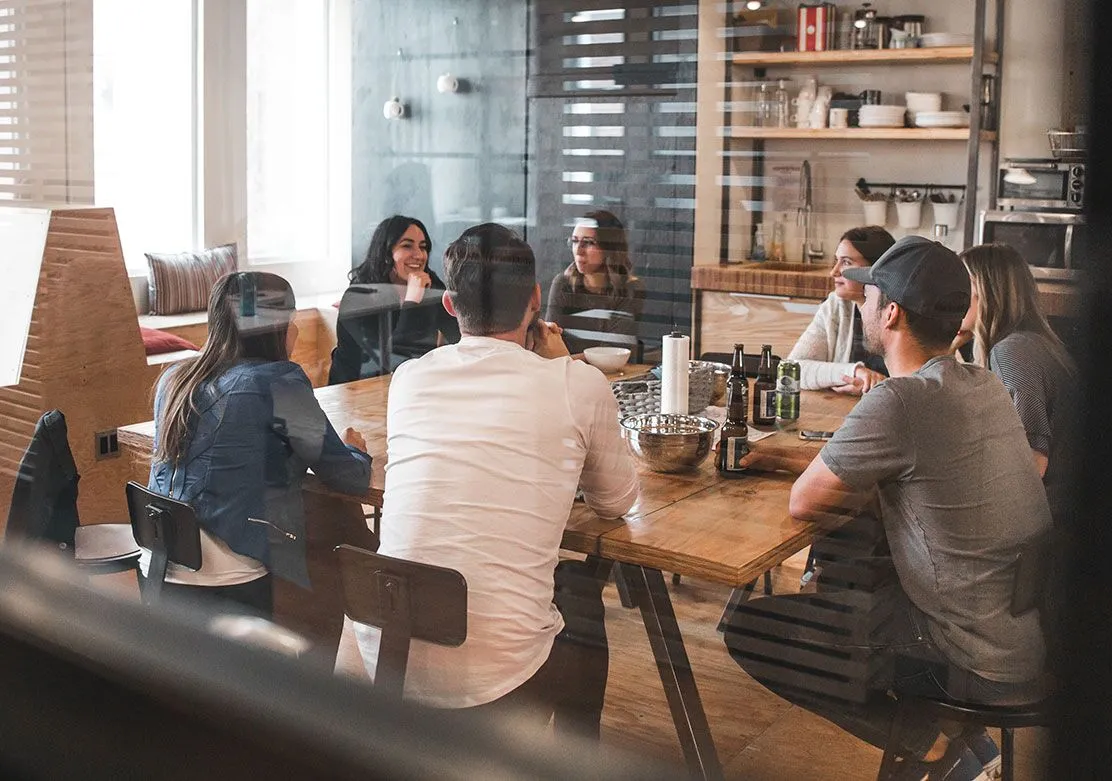Why Teams Stay
Something many leaders are thinking about right now is retention: How do we keep our great people?
And there are a lot of possible answers to that question floating around: increase compensation (pay them more!), improve perks and benefits (give them free lunch and stuff!), make your people feel good (stroke their egos and provide plenty of recognition and appreciation!) – and those are all great answers (and should probably be addressed more in detail—maybe soon…). But there’s one answer you might not have considered: build a solid team (or strengthen your existing team).

The reason this (team improvement process) works is that when people have good relationships with those around them, they want to be near those people and to help those people out. They’ll want to stay on your team, and they won’t want to leave their teammates in a lurch. In essence, by improving relationships on your team, you will strengthen the bonds that hold each person to the team. This is good for you (and for your company), and it can be good for your team members.
One caveat: If you (or your organization) mistreat a team – or even one member on the team – you could lose the whole team. They might be more than willing to stick together but to do so elsewhere. So, it’s not enough to just build a cohesive team, it’s also important to recognize the team members (and the team as a whole) as the asset they are and to treat them with the respect and appreciation they deserve.
I hope by now you’re sold on the importance of creating a strong team. But you may still be wondering how to do it: How can we build a strong team that will stay?
Well, I’m so glad you asked! As it turns out there’s a lot of research done in this area, and one of the main findings is the importance of a characteristic called “groupiness”. The idea behind groupiness is that a team spends so much time together, heading in the same direction, that their brains and bodies fall into a joint rhythm—the team members literally move towards becoming one whole.
According to Annie Murphy Paul, author of The Extended Mind: The Power of Thinking Outside the Brain, there are three actions that support groupiness:
-Training together: Whether you are onboarding a new team or trying to strengthen an existing one, providing training to them – together and in-person – is a key step. This works for a number of reasons, but essentially you are giving them all the same information and the same goals at the same time. You are setting them on a path as a unit.
In fact, “Research shows that teams that trained as a group collaborate more effectively, commit fewer errors, and perform at a higher level than teams made up of people who were trained separately.” Note: If you have a team that is already formed and not in need of specific skills training, consider professional development opportunities that could be done in unison (a seminar that might be of interest to the various members, conflict-resolution training, or a relevant conference). What ideas do you have for providing your team with joint training opportunities?
-Sharing feelings: It is well known that going through a strong emotional (or physically demanding) experience together can strengthen the bonds between the individuals involved. As with training, this emotional bonding is most effective if done jointly—in-person, at the same time. Even something as innocuous as an escape room – or the traditional team-building ropes course – can provide the sense of a shared experience and a shared goal that gets a team on the same page. To get the most out of these activities, I recommend including a trained professional to debrief the experience. It is not just going through the motions of the activity that are important. It is the feelings that occur—and that are shared—which matter most. (Studies have shown that when team members candidly share their thoughts and feelings with one another – even if they are guided to do so – there are improvements in group cohesion and performance.). What are some ways you can make sure your team has opportunities to feel emotions at the same time and to share their thoughts together?
-Engaging in rituals/traditions: You may have noticed a theme here, that groupiness is enhanced when team members spend time together (in-person) outside the ordinary pace and actions of their day-to-day work. Rituals or traditions don’t have to be awkward or weird. They just need to be organized activities for the entire group – a meal together, a regular bowling outing, a monthly movie night, or a quarterly surprise outing. Events that are particularly effective include those involving synchronized movement (yes, like contra-, square-, or line-dancing but also drumming circles, yoga, or tai chi) or shared physiological reactions (like guided meditation or mindfulness). What are some activities you’d like to see your team engage in regularly? (How often? And what do you think their reaction will be to this mandated togetherness? What might you do to make it more appealing – and fun?!)
What else can you think of that might enhance your team’s “groupiness”?
And what is your role? Leader, participant, observer – how will that affect their experience to one another and their relationship to you? Will you be a part of their team? Should you be?
As always, I welcome your feedback and look forward to hearing the answers you have to the questions I’ve posed. If you’d like someone to guide you through any of these thought-processes or to act as a sounding board, just let me know. I’d love to be of help in any way I can.
For questions or to schedule a complimentary discussion on how you can strengthen team bonding, please email me at staffing@maximisetalent.com

